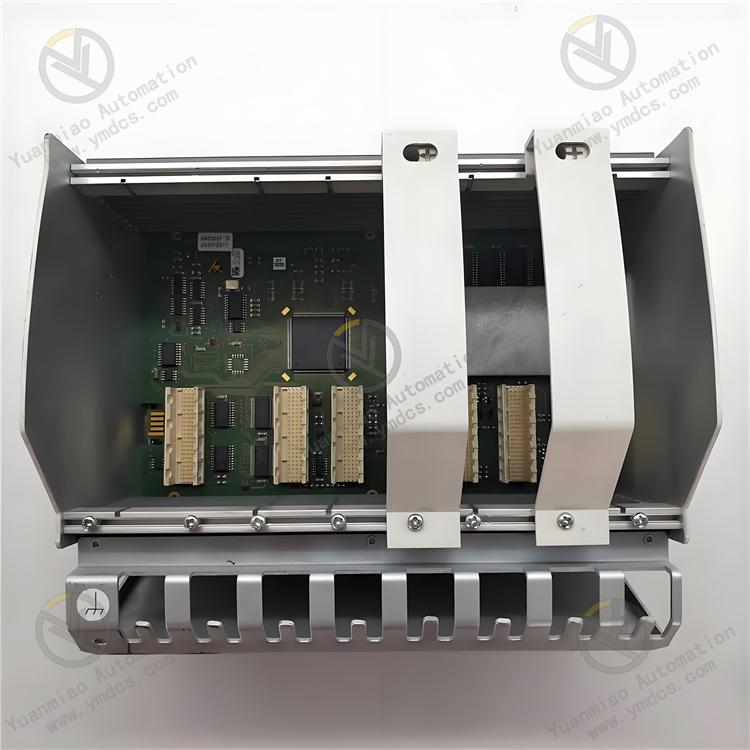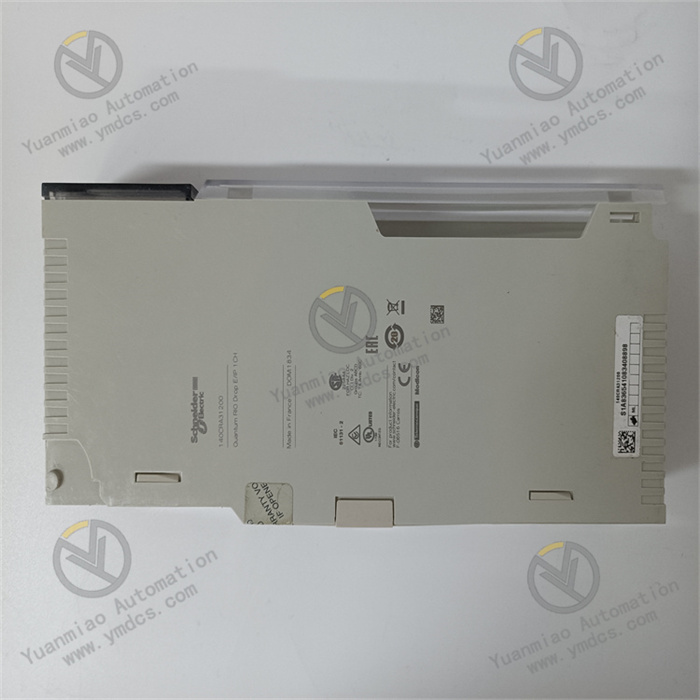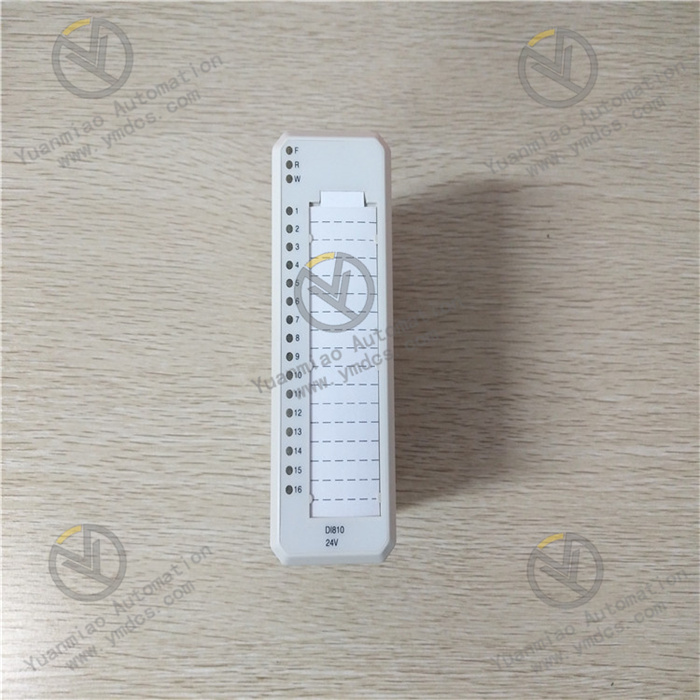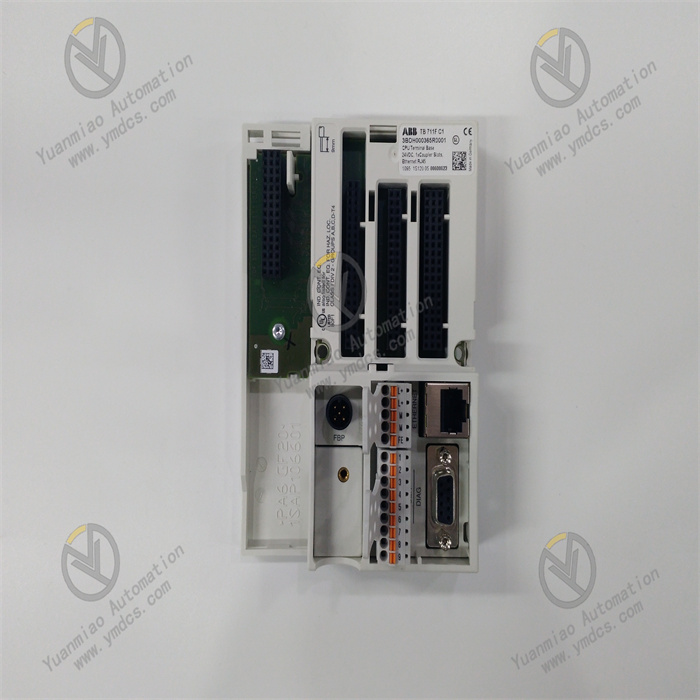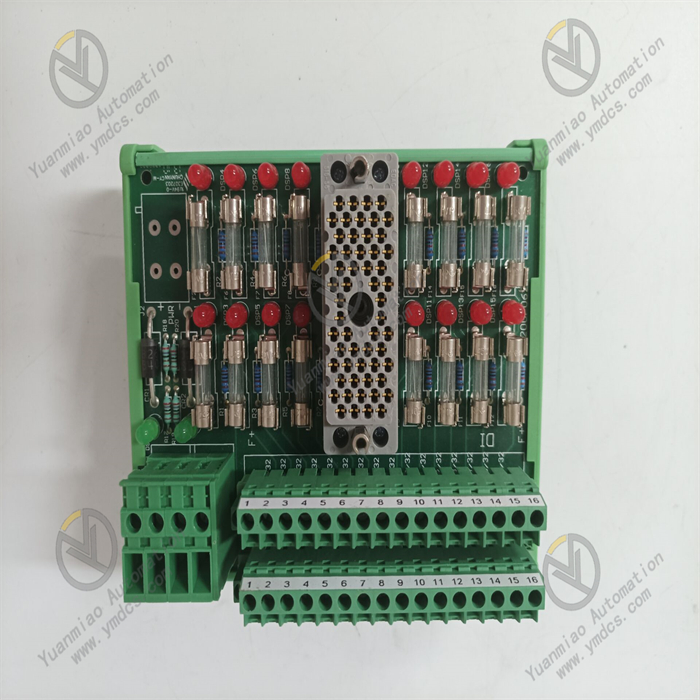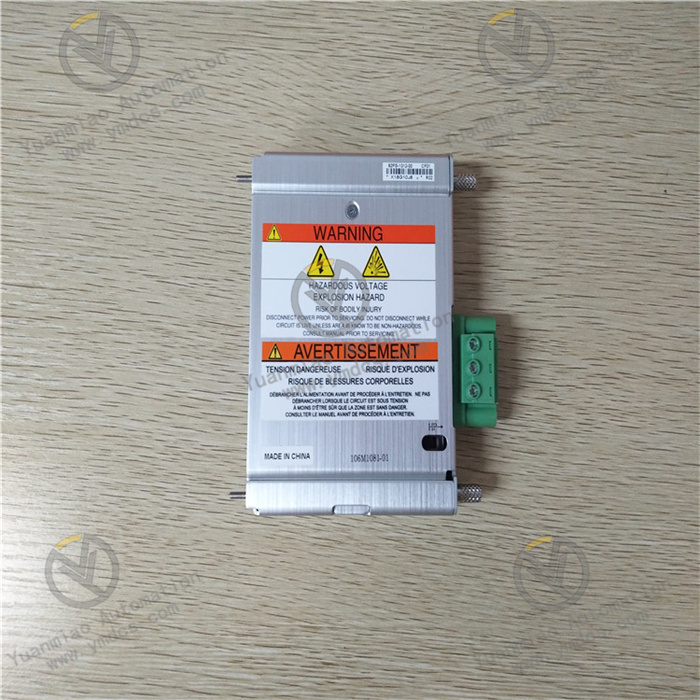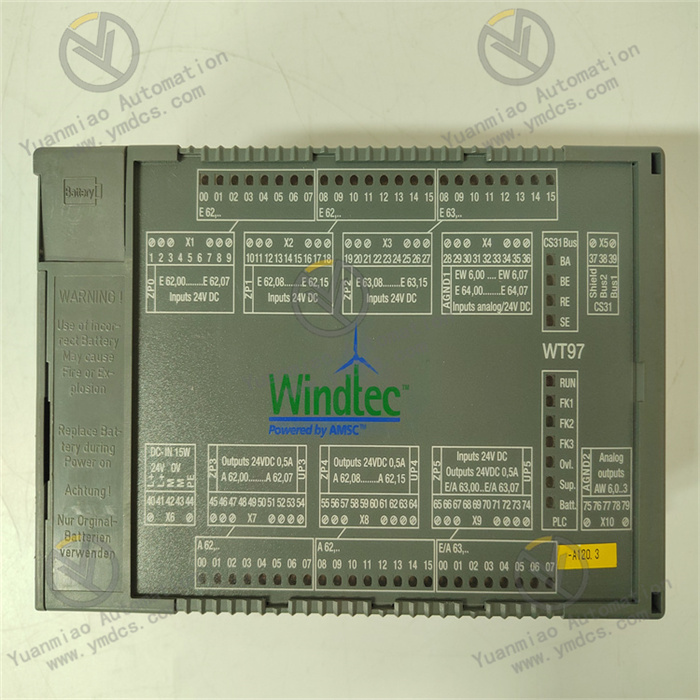Description
ABB 500PSM02 1MRB150015R1 AD-272.100.20-01 AZ:C
Key Features
High-Efficiency Conversion: Utilizes advanced power conversion technology to ensure efficient energy transfer, effectively reducing energy consumption, improving energy utilization, and lowering operational costs.
Multiple Protection Functions: Equipped with multiple protection features such as overload, overvoltage, and overtemperature protection. In case of abnormal conditions, it can promptly cut off the power supply or take corresponding protective measures to prevent damage to the module and other devices due to faults, ensuring safe system operation.
Compact Design: The module features a compact design with a small footprint, making it easy to install in control cabinets or equipment with limited space, and adaptable to different installation environments and layout requirements.
High Reliability: Constructed with industrial-grade components and subjected to rigorous quality inspection and verification, it can operate stably for long periods in harsh industrial environments, reducing maintenance and replacement frequency and enhancing the overall reliability of the system.
Technical Specifications
Input Voltage: Typically adapts to a variety of input voltage ranges, specifically tailored to actual application requirements, and can meet the needs of different power supply environments.
Output Power: Provides stable output power to meet the load requirements of the system, offering reliable power supply for connected devices such as PLC, DCS control systems, sensors, and actuators.
Operating Temperature: Designed to operate in an ambient temperature range of -20°C to +60°C, with a wide operating temperature range that adapts to different industrial site conditions.
Application Areas
Industrial Automation: Provides stable power supply for control systems such as PLC and DCS, ensuring the normal operation of control systems and the automation and precise control of industrial production processes.
Process Control: Powers devices such as sensors and actuators to ensure the accuracy of data acquisition and the reliability of actuation, widely used in process control of industries such as chemical, oil, and gas.
Building Management: Supplies power to various devices in building automation systems, such as air conditioning systems, lighting systems, and elevator control systems, enabling intelligent management and operation of building equipment.
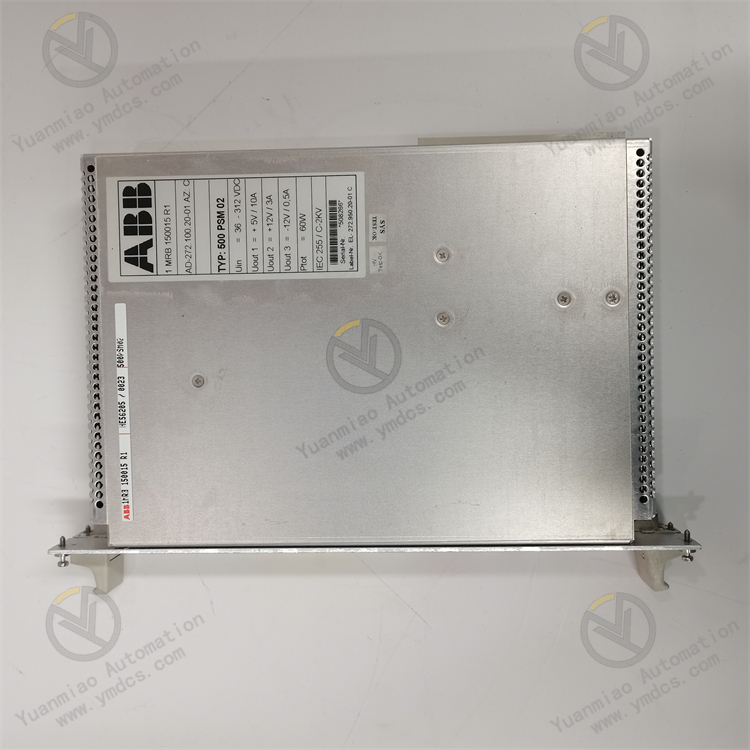
Common Faults, Possible Causes, and Solutions for ABB 500PSM02 1MRB150015R1 Power Module
I. No Output or Abnormal Indicator Lights
- Power Indicator (PWR) Not On
- Possible Causes:
- Input power not connected or voltage abnormal (e.g., AC input voltage outside the module's supported range).
- Damaged or poorly connected input power cables or fuses.
- Internal power circuit failure in the module (e.g., capacitor explosion, chip damage).
- Solutions:
- Check the input power voltage (e.g., AC 220V or DC 24V, matching the module's specifications) and measure the input terminal for stable voltage using a multimeter.
- Replace or re-plug the input power cable and check if the fuse is blown (if the module has an external fuse).
- If the external power supply is normal, it may be an internal module fault; contact a professional for repair or replacement.
- Output Indicator (OUT) Not On or Flashing
- Possible Causes:
- No load connected to the output or abnormal load (e.g., short circuit, overload).
- Internal overcurrent or overtemperature protection triggered, entering protection mode.
- Loose or poor contact at the output terminals.
- Solutions:
- Confirm normal load connection and test the output after disconnecting the load (investigate if a load short circuit caused the issue).
- Check the module's heat dissipation and whether the ambient temperature exceeds the rated range (e.g., 0°C~50°C), and retry after allowing the module to cool.
- Tighten the output terminals to ensure reliable connection; if the load is normal and no overheating occurs, it may be an internal module fault requiring replacement.
II. Unstable or Abnormal Output Voltage
- Low or Fluctuating Output Voltage
- Possible Causes:
- Unstable input voltage (e.g., excessive grid voltage fluctuations).
- Module aging leading to failed voltage regulation or degraded performance of internal components (e.g., electrolytic capacitors).
- Intermittent short circuits or poor contact on the load side.
- Solutions:
- Stabilize the input voltage using a voltage regulator or UPS to eliminate grid issues.
- Disconnect the load and measure the module's no-load output voltage with a multimeter (e.g., nominal 24V DC should be within 23.5V~24.5V).
- If the no-load voltage is normal, gradually reconnect the load to investigate if overloading or faulty loads are causing voltage drops.
- Replace the module if it is aged.
- Excessively High Output Voltage
- Possible Causes:
- Fault in the internal voltage regulation circuit (e.g., feedback loop failure) leading to Out of control output.
- Solutions:
- Immediately disconnect the load to prevent damage to downstream equipment.
- Replace the module to avoid safety incidents or equipment damage due to abnormal voltage.
III. Overheating or Unusual Noise
- Excessive Module Temperature
- Possible Causes:
- Ambient temperature exceeding the module's rated operating range (e.g., poor ventilation, insufficient heat dissipation in control cabinets).
- The module operates at full load or overload for an extended period, or the cooling fan fails (if equipped).
- Internal component failure (e.g., power device short circuit) causing abnormal heat generation.
- Solutions:
- Improve the installation environment to ensure good ventilation for the module, keep it away from heat sources, and install cooling fans or air conditioners if necessary.
- Check if the load current exceeds the module's rated output (e.g., 500PSM02 may be 24V/5A, confirm specifications) and avoid overloading.
- If the fan stops, clean the fan dust or replace the fan; if internal overheating is abnormal, replace the module.
- Internal Noise (e.g., High-Frequency Whistling)
- Possible Causes:
- Abnormal input voltage (e.g., undervoltage causing the module to operate in an unstable region).
- Loose internal components such as inductors or transformers, or aging of magnetic cores causing mechanical vibrations.
- Solutions:
- Check if the input voltage is within the module's allowable range (e.g., AC 100-240V or DC 24V).
- If the noise persists, internal component damage may occur, requiring timely module replacement to prevent fault escalation.
IV. Communication or Status Indicator Abnormalities (if the module supports communication functions)
- Communication Interruption (e.g., Unable to Read Module Status via Bus)
- Possible Causes:
- Incorrect, loose, or damaged communication cable connections.
- Module communication address conflicts or protocol configuration mismatches with the host computer.
- Internal communication chip failure in the module.
- Solutions:
- Check the communication cable (e.g., RS485, Modbus bus) connections to ensure correct polarity and secure interfaces.
- Reconfigure the module's communication parameters (e.g., baud rate, slave address) to avoid conflicts with other devices.
- If there is a hardware fault, replace the module and re-initialize the configuration.
V. Other Common Issues
- Fuse Blows Frequently
- Possible Causes:
- Persistent short circuits on the input or output side.
- Mismatched fuse specifications (rated current too small).
- Solutions:
- Investigate short circuits in the input/output loops (e.g., damaged cables, internal load short circuits).
- Confirm that the fuse specifications comply with the module's requirements (refer to the manual) and avoid using non-original accessories.
- Module Fails to Start (Cold Start Fault)
- Possible Causes:
- Capacitor performance degradation in low-temperature environments leads to difficult startup (if the module is not designed for wide-temperature operation).
- Aging of internal energy storage components prevents normal power-up initialization.
- Solutions:
- Ensure the module operates within the rated temperature range (e.g., above 0°C); preheat or use wide-temperature modules in low-temperature environments.
- Replace the module to eliminate component aging issues.




